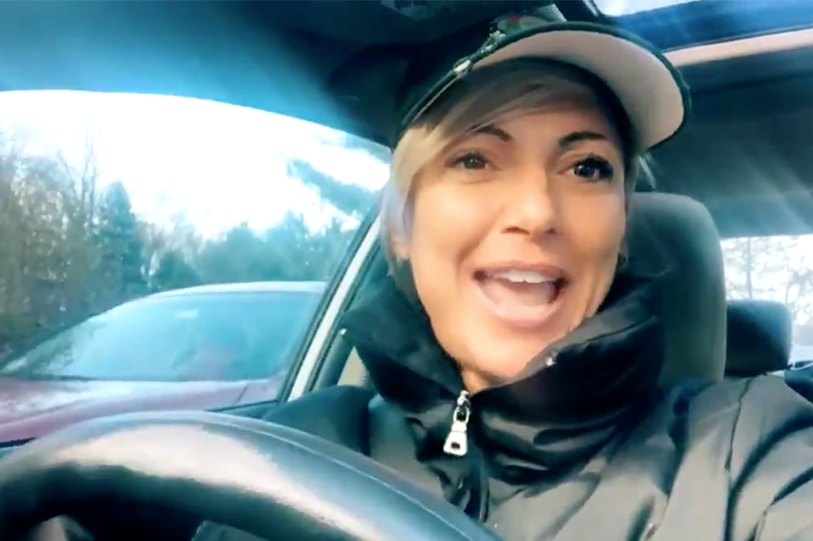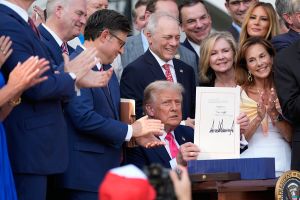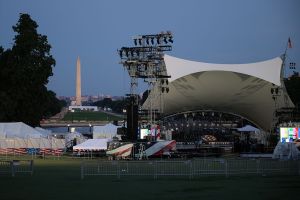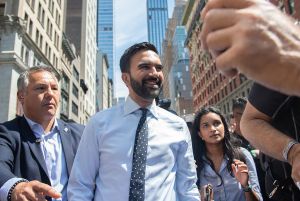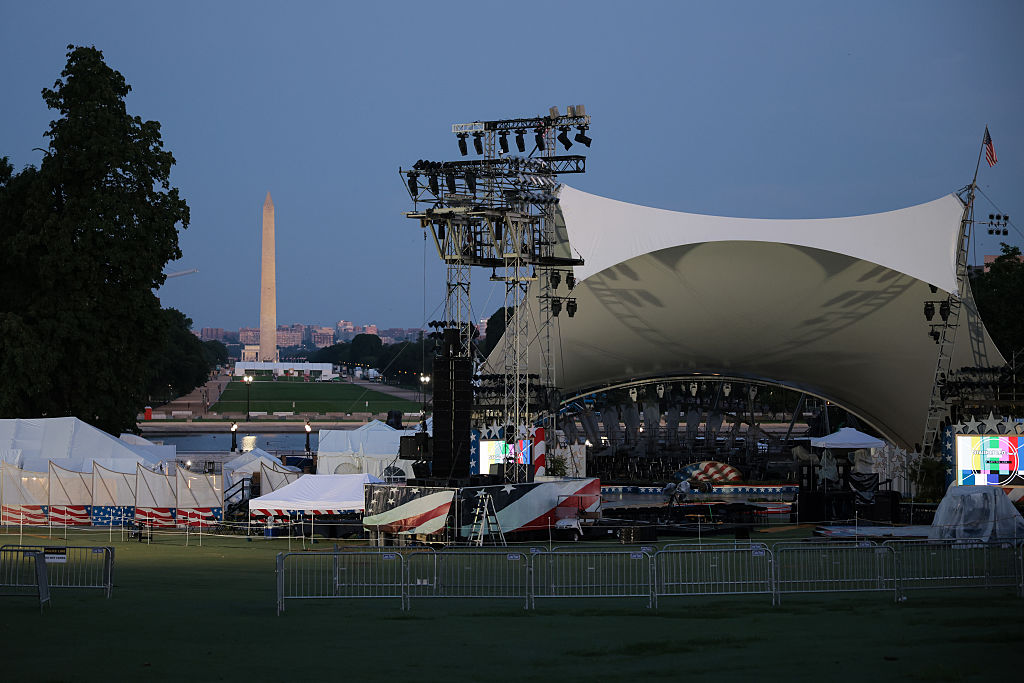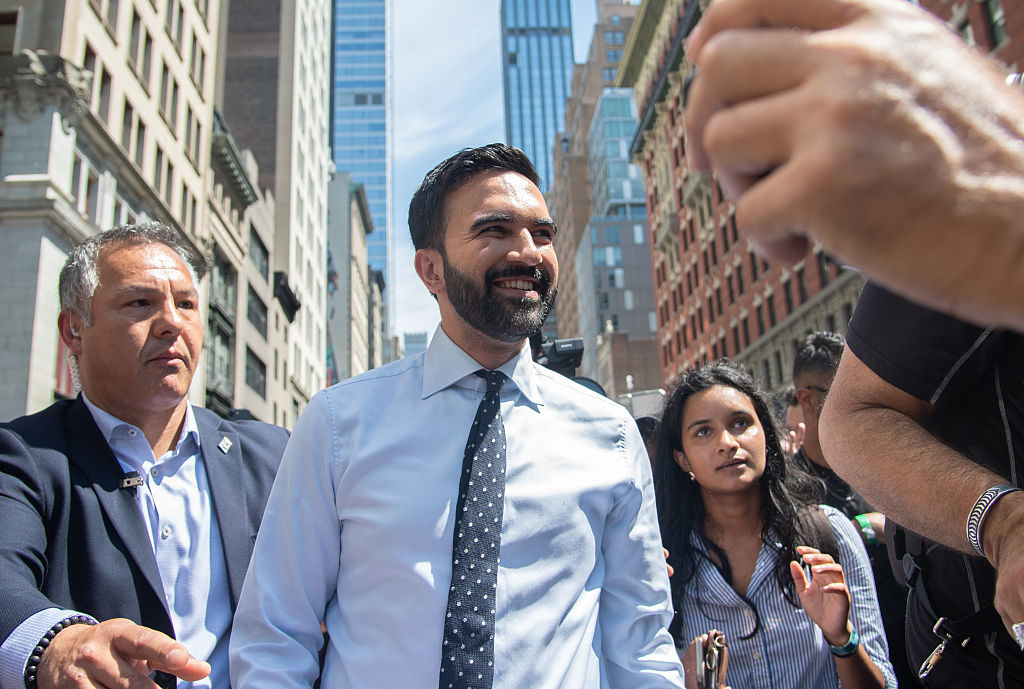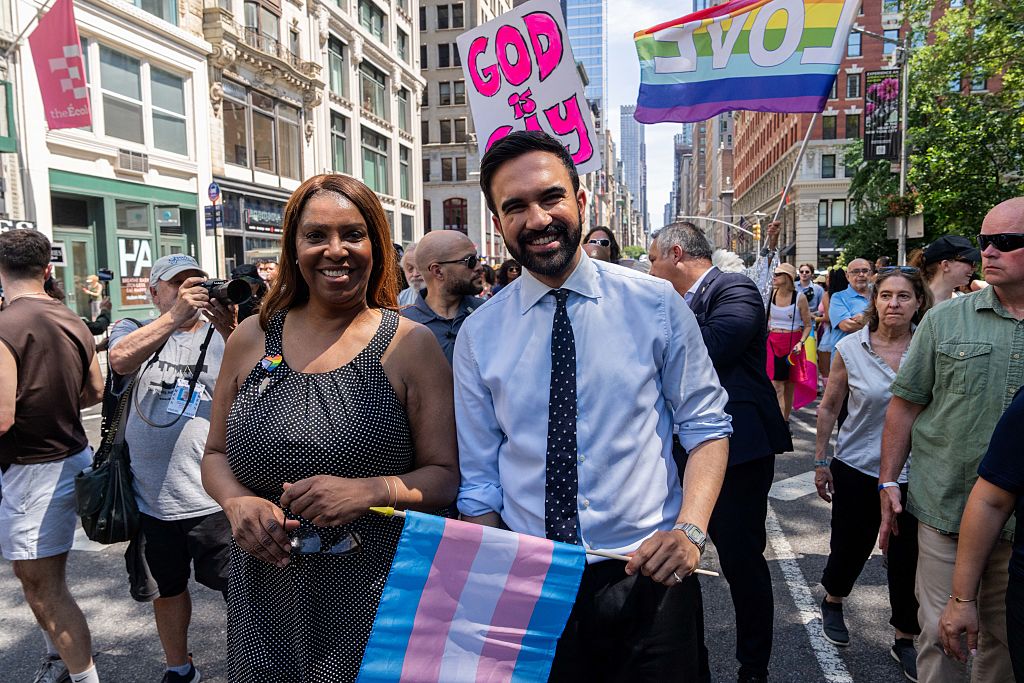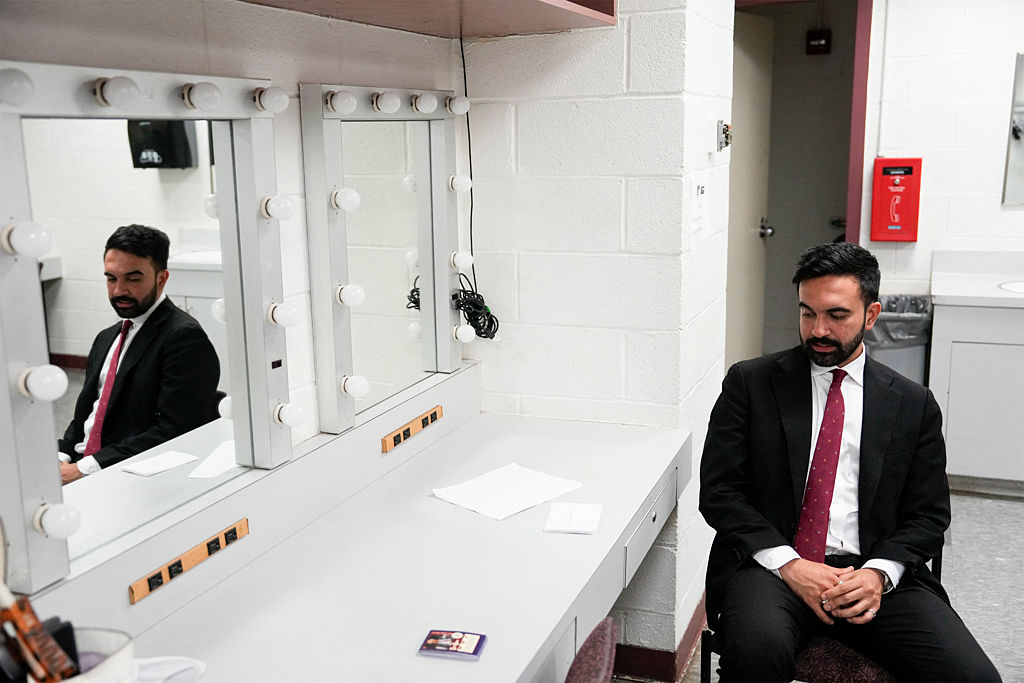Have you met Tina? You may have seen her this month leading a charge outside Mac’s Public House on Staten Island, protesting a second wave of economic terrorism against small business owners enacted by Mayor Bill de Blasio and Gov. Andrew Cuomo.
The fiery, bombastic blond with the thick New York accent and colorful vocabulary has shown up at anti-lockdown events across the city, broadcasting footage to her 206,000 Twitter followers at a time when everyday New York Republicans are having a bit of time in the spotlight.
Hey @NYCMayor @NYGovCuomo pic.twitter.com/yei8avZt63
— Tina40 (@RealTina40) December 6, 2020
A couple of years ago, the city cheered Vickie Paladino, a mom from Queens who was driving home one day and saw de Blasio surrounded by reporters on the street. He was investigating sidewalks damaged by tree roots. Paladino pulled over, got out of her car, and marched up to the mayor, blasting him over cops murdered on his watch.
‘We can fix our own sidewalks, thank you’, she told the mayor.
Two weeks ago, the New York Young Republican Club, an organization founded by Teddy Roosevelt (who recently had his statue removed outside the American Museum of Natural History), gained national attention for holding their annual gala — indoors no less! The same Democratic mayors and governors who remained silent as thousands of progressives marched for Black Trans Lives, promised vengeance on the tiny club.
More New Yorkers voted for Donald Trump in 2020 than in 2016, with the Republican’s support doubling in some unlikely areas such as in the Bronx — the poorest and least white borough of the city.
In New York City’s 65 Assembly districts, Republicans gained votes in all but five and the New York suburbs went red for Trump, save Westchester County, home of Hillary Clinton. Most tellingly, but unsurprisingly, the red shift was only found in New York City and the immediate suburbs — the rest of the region slid further blue.
New York isn’t Boston times 11 or Philadelphia times six. The soul of the place, going back hundreds of years to its founding as a Dutch trading post, has always been transactional. That is, of course, represented in the city’s primary industry — finance. It is why, when you step off the plane at JFK, or off the bus at Port Authority, you immediately feel that you have entered somewhere entirely else, where the citizens have a unique way of seeing one another and their place in the world.
That spirit charmed the planet. The outer-borough native New Yorker has long been a nationally and internationally beloved American archetype. That accent, the intrusiveness, the no-bullshit attitude. They’re so lovable and entertaining that media, in the recent cases of Tina and Vickie, continues to give such characters favorable attention despite their politics, which is unique in the Trump era.
The New York Republican is virtually immune from the left’s most powerful but ultimately meaningless repeated smear of ‘racist!’ Granted, New York City has several pockets were anti-white and anti-Jewish hatred festers, but those neighborhoods vote Democrat. How exactly would a white nationalist survive in New York City, mentally, you wonder? If the media caricature of the average Trump supporter was true, are we expected to believe there are scores of New Yorkers who leave the house each morning fuming and muttering obscenities each step of the way as they plow through an unending avalanche of racial diversity on the streets?
New York’s transactional soul — its foundation of free markets, free associations, and libertinism — did not produce, as the left tends to fear, a cruel and unforgiving capitalist dystopia but instead a place with a formidable and insular sense of camaraderie among its citizens unlike anywhere else on the planet.
Bostonians will do just fine in Washington DC; Seattleites can move to Chicago and have no problem making friends; Nashvillians can easily start fresh in Dallas, but New Yorkers struggle to relate to people from other cities. We come off too abrasive, our humor is too dry, and we mistakenly expect a familiar level of porousness from others. I can’t be the only one who has left a party in another city feeling slightly embarrassed that I may have overshared, cussed too much, or pried a bit too hard for some nugget of human insight from the guarded strangers clutching plates of hors d’oeuvres — all mingling manners that would be perfectly normal back home.
Appalachian Southerners might be an exception. At least in my experience, real New Yorkers and Appalachia share a common embrace of personal freedom, an openness to strangers, and a love of the theatrical and outrageous. It also may be why New York City and Appalachia were both slow to choose a side in the American Civil War. Left-wing historians like to claim New York financiers with interest in Southern textiles didn’t want to offend the South by siding with the North. The truth probably has more to do with average New Yorkers wanting to be left alone to conduct business without get mired in the power struggle between the Yankee North and the Deep South.
While both most of New York and Appalachia loathed slavery, Appalachia reluctantly sided with the Deep South as they came to see the meddlesome busybodies of the Yankee North as a greater threat to their own, freedom-loving way of life than the repulsive slave owners, who at least promised to leave them alone.
Despite siding with the Union and having a baseball team by that name, New York is not Yankee country, although that is rapidly changing. The term Yankee is commonly used today as slang for Northerners in general or those from the Northeast in particular. But it actually refers to a sect of American culture with roots in New England puritanism that has spread westward from Boston throughout the Great Lakes and jumped over to the West Coast — and ideology that enforces strict moral codes, believes in engineering a heavenly utopia on earth, places the needs of the village over the individual, engages in public humiliation, and holds higher education in great esteem. We joke that the progressive left are the modern day Puritans, except they are literally their direct descendants. It’s actually not a joke. They simply got rid of God somewhere along the way.
[special_offer]
The Puritan lifestyle and the Aristotelian nature of the Deep South were both antithetical to New York’s values and its founding. And it wasn’t too long ago that New Yorkers stridently looked down their noses at the dirty hippies and hopeless idealism of the West Coast, and the uptight priggish Northeast. Now, the people of New York are slowly becoming indistinguishable from them.
New York has been under Yankee siege for the last couple decades with hordes of young people marching out of the university system and moving to town. (America’s higher education system is firmly based on a Puritan ethos. It’s one of the reasons why our brain trust is centered in New England, where most of the country’s top, and oldest, universities are). This insurgency has taken over city government as well, and the city that gave us Republicans like Teddy Roosevelt, the Rockefellers and Rudy Giuliani now seems primed for a Chicagoan gangland model of the Democrat machine to take permanent footing.
That would be an unfortunate loss for not just America, but the world. Compounded with the death of manufacturing in the five boroughs and the steady exodus of middle and working class New Yorkers, is the latest Republican twinkle a final rage against the spiritual death of old New York, as the city becomes absorbed by its neighboring, dominant culture? Or is it a rejuvenating spark?



